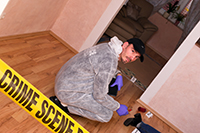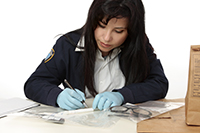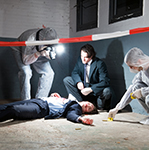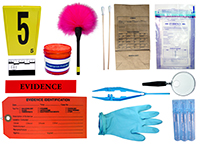
Forensic science is the study and application of science to matters of law. Forensic scientists spend most of their time in the lab analyzing evidence. They are often called to court to testify about their results and are sometimes called to the crime scene to oversee the collecting of evidence.

A CSICrime Scene Investigator has a totally different job from a forensic scientist but many times are confused with forensic scientists. A CSI's job involves going to the crime scene, collecting evidence, and putting the pieces of evidence together to try to solve the case. Most CSIs do not analyze evidence but there are exceptions.

When CSIs and forensic scientists investigate a crime scene, safety must be a priority. Usually the first responder to a crime is a police officer. The police officer tends to victims (if there are any) and secures the area. CSIs and forensic scientists enter a crime scene when the area is deemed safe, but safety from evidence must also be considered. PPEPersonal Protective Equipment must be worn when handling evidence. PPE worn by CSIs and forensic scientists most often includes gloves, safety glasses, lab coat, and sometimes even a full body suit. The PPE worn depends on the crime scene and the evidence being handled.

There are many different fields of forensic science and this course will cover many of them. For example, the medical examiner (forensic pathologist) is responsible for collecting the body and any evidence found on the body. If bones are found a forensic anthropologist is called to collect the bones. If any insects are found on the body, a forensic entomologist is called to the crime scene.


Other pieces of evidence are packaged in a primary container and a secondary container, sealed with tape and initialed by the collector and dated. Then the evidence is sent to the lab for the forensic scientist to test. The forensic scientist uses the scientific method just like all scientists do. The steps to the scientific method might look like this:
- Observe a piece of questioned evidence (Example: unknown fingerprint found at a Crime Scene
- Consider who/what the evidence might match with (Example: look at known prints-suspects)
- Examine, test and retest the evidence (Example: compare the unknown to known prints)
- Analyze the results (Example: Determine if there is a match or not)
- Determine the significance and formulate a theory based on the results (Example: Conclude that the person's whose prints match were at the crime scene or wrote the letter)


